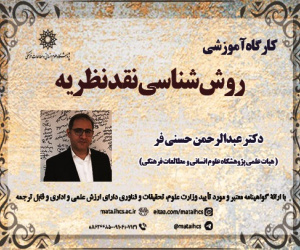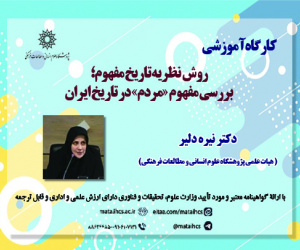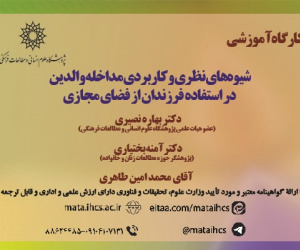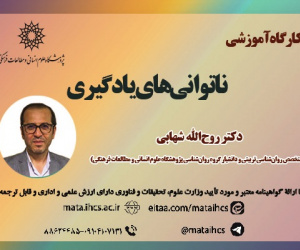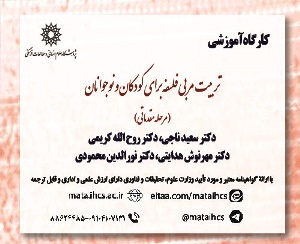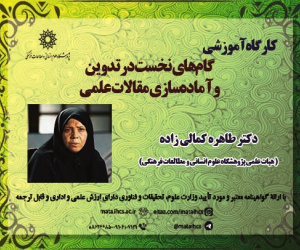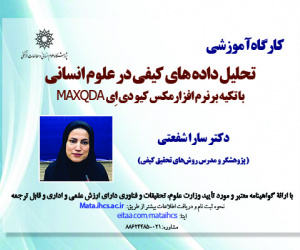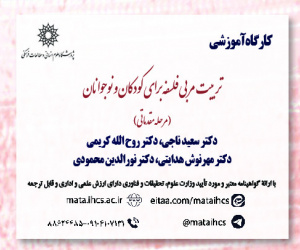مرور کتاب شناختی مولفه های موثر بر پیاده روی زنان در فضاهای شهری (بازه زمانی 2024-2014) (مقاله علمی وزارت علوم)
درجه علمی: نشریه علمی (وزارت علوم)
آرشیو
چکیده
بررسی عوامل تأثیرگذار بر پیاده روی زنان در فضاهای شهری نه تنها به ارتقای سلامت و کیفیت زندگی آن ها کمک می کند، بلکه گامی اساسی در جهت طراحی شهرهای فراگیر، امن و پاسخگو به نیازهای جنسیتی است. هدف از این مطالعه، مروری کتاب شناختی بر مطالعات انجام شده در زمینه پیاده روی زنان در فاصله سال های 2014 تا 2024 است. بدین منظور پس از جست وجوی مقالات در پایگاه استنادی اسکوپوس 4153 مقاله یافت شدند که پس از اعمال فیلترهای مد نظر، 130 مقاله حاصل شدند. تجزیه وتحلیل داده های استنادی نشان می دهد که کشورهایی نظیر ایالات متحده آمریکا، ژاپن، انگلستان، آمریکا، استرالیا و ایران بیشترین تعداد مقالات را در این حوزه ارائه داده اند. همچنین بیشترین تعداد مقالات مربوط به سال های 2021 و 2017 و کمترین تعداد مقالات مربوط به سال های 2014 و 2015 است. علاوه براین، عملکرد نویسندگان و نشریات و سازمان ها نیز بررسی شده است. بر اساس یافته های پژوهش، مطالعات انجام شده در این حوزه به چهار دسته تقسیم می شوند: پژوهش هایی که نقش عوامل محیطی و طراحی شهری را بر پیاده روی زنان بررسی کرده اند؛ مطالعاتی که به بررسی تأثیر احساس ایمنی و امنیت بر پیاده روی زنان توجه داشته اند؛ پژوهش هایی که تأثیر عوامل اجتماعی فرهنگی بر پیاده روی زنان را مورد بررسی قرار داده اند و مطالعاتی که رفتار پیاده روی زنان و مردان را مقایسه کرده اند. یافته های این پژوهش نه تنها به شناسایی روندهای پژوهشی و شکاف های تحقیقاتی در ادبیات موجود یاری می رساند، بلکه بستری برای توسعیه چهارچوب های نظری یکپارچه و سیاست گذاری های آگاهانه در ایجاد فضاهای شهری که به نیازهای زنان پاسخ دهند، فراهم می کند.Bibliographic review of factors affecting women's walking in urban spaces
IntroductionWalking has emerged as a highly sustainable mode of transportation that plays a crucial role in enhancing urban livability and reducing environmental degradation. In an age where urban areas are grappling with severe issues such as noise and air pollution, walking offers an eco-friendly alternative to the reliance on private vehicles. This mode of transport not only contributes to environmental sustainability but also offers significant public health benefits. Numerous studies have indicated that walking serves as an effective means of alleviating stress, fostering mental well-being, and promoting physical fitness. It is not merely a physical activity; it is a holistic practice that fosters social connections and encourages community engagement, thereby enriching urban life.The significance of walking extends beyond its environmental and health benefits. It is a multifaceted activity that encompasses various aspects of social interaction and individual well-being. Walking provides an opportunity for individuals to connect with their surroundings and with one another, creating a sense of community and belonging. The act itself can serve as a platform for socialization, where individuals engage in conversations, share experiences, and build relationships. Consequently, the design and accessibility of urban spaces play a pivotal role in facilitating or hindering walking behaviors among residents.However, despite its many benefits, certain groups—particularly women—face unique challenges that can impede their walking experiences. Gender-based disparities in urban environments often lead to safety concerns, social restrictions, and infrastructural inadequacies that disproportionately affect women. Recognizing and addressing these barriers is essential for ensuring that all individuals, especially women, have equitable access to walking opportunities and can reap the associated health benefits. In this context, promoting inclusivity and equity in urban planning is vital for fostering environments that support the health and well-being of all community members MethodologyTo investigate the current state of research on women’s walking in urban environments, we conducted a comprehensive examination of scholarly articles published in the Scopus citation database between 2014 and 2024. The search utilized specific keywords, including “Walking,” “Walkability,” “Women,” and “Female,” to identify articles relevant to our focus on women’s walking patterns in urban settings. The emphasis on both social sciences and environmental sciences in our review allowed for a multifaceted understanding of the issues at play.Initially, our search yielded a total of 4,153 articles. To refine this extensive dataset, we implemented a rigorous filtering process. We assessed the relevance of articles based on title and author name, and systematically eliminated those lacking English titles, abstracts, or keywords. Additionally, we excluded titles that were deemed irrelevant to our study focus. This meticulous approach resulted in a final selection of 130 articles, extracted from a diverse array of 76 sources, including academic journals and conference proceedings.The articles selected for review were analyzed for various metrics, including publication age, citation frequency, and author collaboration rates. The average age of the articles was determined to be 5.4 years, indicating the recency of the research focus. The annual growth rate of published articles was calculated at 5.76%, with an average of 20.72 citations per article. Notably, 21 of the selected articles were authored by a single researcher, while the remaining articles exhibited an average collaboration rate of 3.32 authors, highlighting the collaborative nature of research in this field. The findings reveal a dynamic and growing body of literature focused on women’s walking in urban environments.Results and DiscussionThe analysis of the articles indicated a notable trend in the geographic distribution of the research. The majority of articles were published by authors based in the United States (107 articles), followed by significant contributions from Japan, England, and Australia (29 articles each), and Iran (24 articles). This distribution suggests a concentration of research activity in developed countries, where urban design and policy issues related to walking have garnered significant academic attention.Among the selected articles, the most frequently published journals included the Journal of Transport and Health and the International Journal of Environmental Research and Public Health. These journals are known for their focus on public health, urban planning, and environmental issues, making them appropriate venues for research on women’s walking behaviors.In terms of thematic categorization, the studies were grouped into four distinct categories:Environmental Factors: This category encompasses research examining how physical urban environments, including infrastructure, green spaces, and walkability features, influence women’s walking behaviors. Studies in this area often highlight the importance of well-designed sidewalks, safe crossings, and accessible public spaces.Safety and Security: Research in this category focuses on how perceptions of safety and security impact women’s willingness to walk in urban areas. This includes examining factors such as crime rates, lighting, and the presence of other pedestrians, which can either encourage or discourage walking.Sociocultural Factors: This group of studies investigates the sociocultural dynamics that shape women’s walking behaviors, including societal norms, cultural expectations, and gender roles. Understanding these factors is crucial for addressing the barriers women face in accessing walking opportunities.Gender Comparisons: Some studies explore the differences in walking behaviors between women and men, providing insights into how gender influences walking patterns, motivations, and experiences in urban settings.The review of the literature revealed that most research has been conducted in developed countries, with a conspicuous gap in studies focusing on developing nations. Given the unique cultural and social contexts of developing countries, there is a pressing need for research that examines the factors affecting women’s walking behaviors in these regions. Insights derived from such studies could inform policy and planning efforts that are more culturally sensitive and tailored to the specific needs of women in diverse urban contexts.Furthermore, the predominance of cross-sectional studies in the existing literature suggests that longitudinal research is particularly important for understanding the long-term effects of walking on women’s health and the impact of urban design on pedestrianization. Longitudinal studies could provide valuable data on how changes in urban environments influence walking behaviors over time and the subsequent effects on health outcomes.Another significant finding is the variability in research methodologies. While some studies have adopted qualitative approaches to explore women’s lived experiences, others have employed quantitative methods to analyze walking patterns and behaviors. A mixed-methods approach, integrating both qualitative and quantitative methodologies, could yield a more comprehensive understanding of the factors influencing women’s walking behaviors and experiences.Conclusion The findings of this study not only identify current research trends and gaps in the literature on women’s walking in urban environments but also offer a foundation for developing integrated theoretical frameworks. This framework can inform policymaking aimed at creating urban spaces that cater to the unique needs of women. Addressing the barriers women encounter in accessing walking opportunities is essential for fostering environments that promote health, well-being, and social equity.By enhancing the inclusivity of urban design and planning, policymakers can help create urban communities where all individuals can thrive. Such efforts can contribute to a more sustainable urban future, where walking is not only a viable mode of transportation but also a pathway to improved health outcomes, enhanced social connections, and greater community cohesion. Ultimately, the promotion of walking as a fundamental component of urban life is essential for building vibrant, resilient, and inclusive urban environments. Through targeted research and informed policy interventions, it is possible to realize the transformative potential of walking in urban areas, ensuring that all individuals, particularly women, can fully participate in and benefit from the rich tapestry of urban life.
